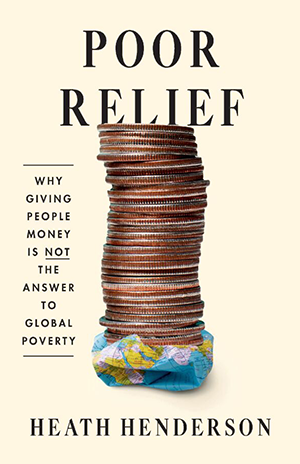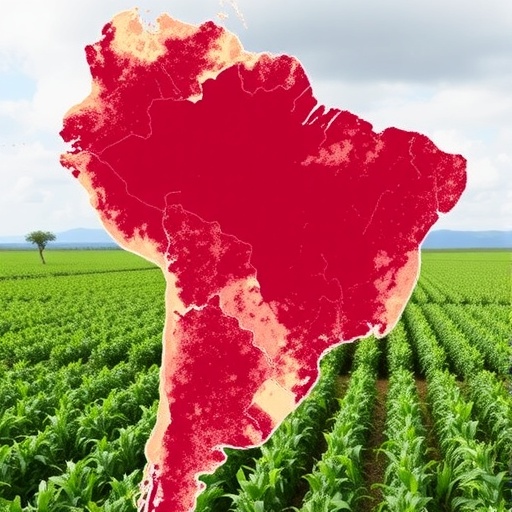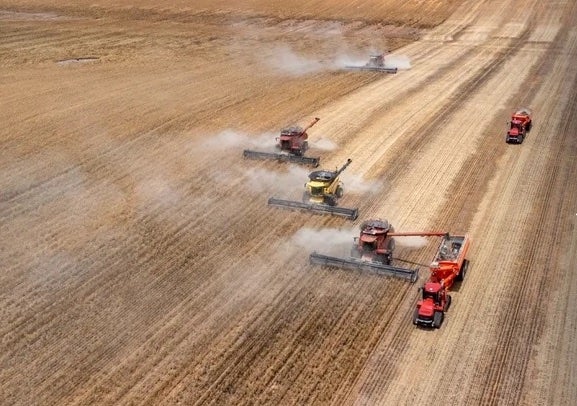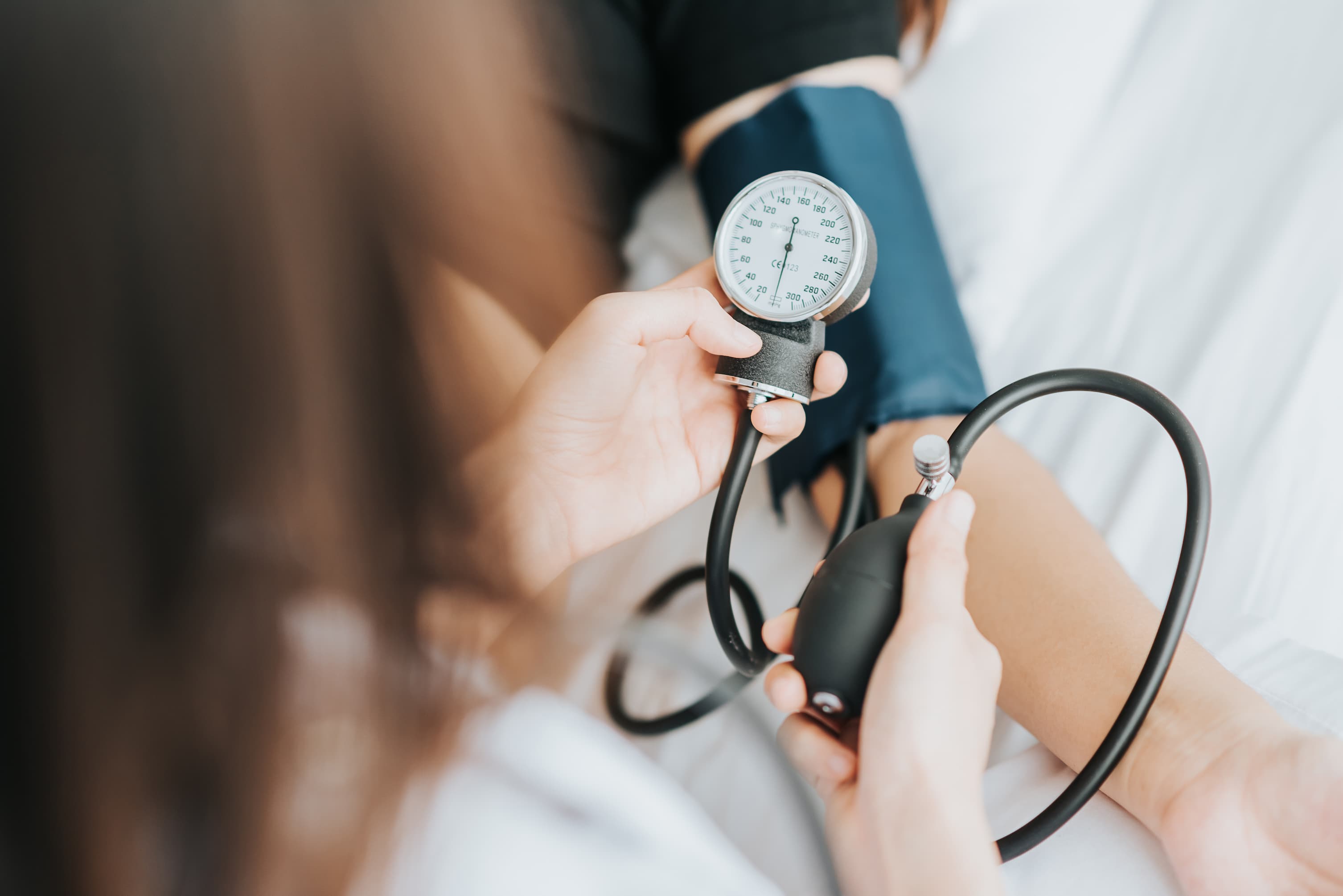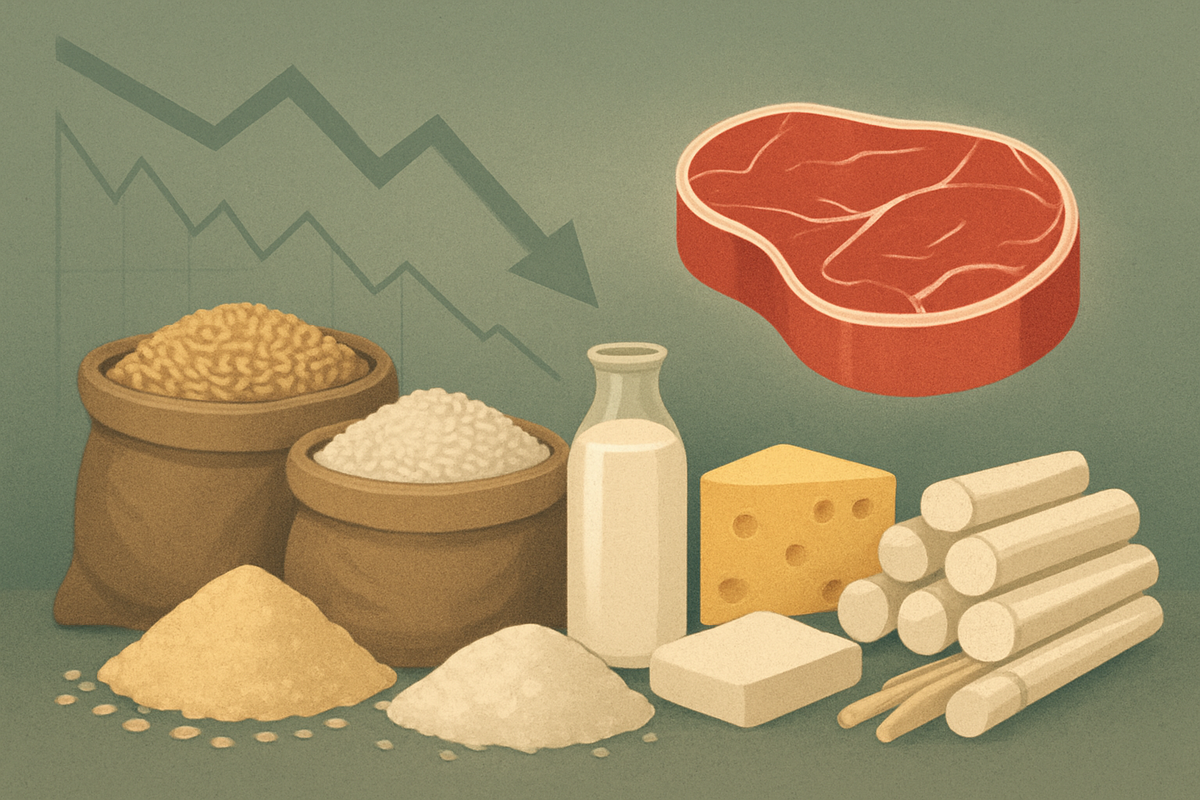Four-year-old girl dies of hunger in Gaza as Israel throttles food supply – CNN

Report on the Humanitarian Crisis in Gaza and its Conflict with Sustainable Development Goals
Introduction
The ongoing conflict in the Gaza Strip has precipitated a severe humanitarian crisis, characterized by widespread famine and a collapse of the healthcare system. This situation represents a profound failure to meet several key United Nations Sustainable Development Goals (SDGs), particularly SDG 2 (Zero Hunger), SDG 3 (Good Health and Well-being), and SDG 16 (Peace, Justice and Strong Institutions). This report analyzes the escalating crisis, drawing on recent events and official data to highlight the direct contravention of these global objectives.
SDG 2: Zero Hunger – A Catastrophic Failure
The situation in Gaza demonstrates a complete breakdown in food security, directly opposing the core mission of SDG 2 to end hunger, achieve food security, and improve nutrition. The population is experiencing catastrophic levels of famine, with children being the most vulnerable.
Key Indicators of Famine and Malnutrition
- Child Mortality: The death of four-year-old Razan Abu Zaher from hunger-related complications is a stark example of the crisis. At least 76 children and ten adults have officially died of malnutrition since October 2023.
- Accelerating Crisis: The Palestinian health ministry recorded 18 deaths due to famine in a recent 24-hour period, indicating a rapid deterioration. The World Health Organization notes that most malnutrition deaths have occurred since Israeli authorities imposed a blockade in early March.
- Widespread Starvation: Medical facilities report an “unprecedented number” of citizens arriving in severe states of exhaustion. The Palestinian Center for Human Rights describes extreme emaciation among the population.
Disruption of Food Supply and Humanitarian Aid
The inability to achieve SDG 2 is directly linked to the severe restriction of humanitarian aid and the collapse of food distribution systems.
- Aid Blockade: An Israeli ban on aid convoys beginning in March severely limited food access. While partially lifted, aid agencies report that incoming amounts are insufficient to sustain the population.
- Operational Halt: World Central Kitchen, a major provider of meals, has been forced to pause operations twice due to a lack of ingredients, having exhausted its stocks while aid trucks remain unable to enter the territory.
- Conflicting Accounts:
- Israeli authorities (COGAT) state they are facilitating aid and claim Hamas diverts it, an allegation Hamas denies. COGAT reports that approximately 1.5 million tons of food have entered Gaza since the conflict began.
- The United Nations reports that Israeli forces frequently deny permission for aid convoys to move within Gaza, impeding distribution.
SDG 3: Good Health and Well-being – Systemic Collapse
The crisis has decimated Gaza’s healthcare infrastructure and the well-being of its population, a direct violation of SDG 3, which aims to ensure healthy lives and promote well-being for all at all ages.
Impact on Civilian Health and Medical Facilities
- Overwhelmed Hospitals: Hospitals such as al-Aqsa Martyrs and Kuwait field hospital are overwhelmed with patients suffering from severe malnutrition. Dr. Suhaib Al-Hams of Kuwait field hospital stated that patients are in “dire need of food before medicine.”
- Acute Malnutrition in Children: The UN Emergency Relief Coordinator reported in June that over 5,800 children had been diagnosed as acutely malnourished, the highest level recorded during the conflict.
- Medical Staff at Risk: Medical personnel are also suffering from hunger, with reports of doctors working 24-hour shifts without food. Dr. Mohammed Abu Salmiya of Al-Shifa Hospital noted that medical staff are arriving in a state of collapse from malnutrition.
- Compounded Suffering: A volunteer surgeon with Medical Aid for Palestinians, Sarmad Tamimy, described a situation where extensive injuries are compounded by inadequate nutrition, lack of medical supplies, and rampant infections.
SDG 16: Peace, Justice and Strong Institutions – Erosion of Civilian Safety
The fundamental principles of SDG 16, which include promoting peaceful societies and protecting fundamental freedoms, have been systematically undermined. Civilians seeking essential aid face lethal risks, demonstrating a collapse of protective institutions.
Failure to Protect Civilians Accessing Aid
- Lethal Risks for Aid Seekers: Desperate civilians risk their lives to find food. In one incident, over 70 people were reportedly killed by Israeli troops while seeking aid. The Israel Defense Forces (IDF) stated that troops fired warning shots to remove an immediate threat and that the incident is under review.
- High Casualty Rate: The Office of the UN High Commissioner for Human Rights (OHCHR) recorded the killings of 798 people attempting to access aid between late May and July 7.
- 615 of these deaths occurred near sites of the Gaza Humanitarian Foundation (GHF).
- 183 others were killed along aid convoy routes.
- International Condemnation: The UN Emergency Relief Coordinator, Tom Fletcher, informed the UN Security Council that “People are dying trying to feed their families,” underscoring the complete failure to ensure civilian safety in a conflict zone.
Analysis of Sustainable Development Goals in the Article
1. Which SDGs are addressed or connected to the issues highlighted in the article?
-
SDG 2: Zero Hunger
- The article’s central theme is the severe famine and hunger crisis in Gaza. It repeatedly mentions “hunger,” “malnutrition,” “famine,” and “starvation,” directly linking the entire narrative to the goal of ending hunger. The story of Razan Abu Zaher, who died from complications of hunger, is a stark illustration of the failure to achieve this goal.
-
SDG 3: Good Health and Well-being
- The article details the devastating health consequences of the hunger crisis. It discusses deaths from malnutrition, overwhelmed hospitals, lack of medical supplies, and the physical deterioration of the population. Statements from doctors about patients arriving in states of “severe exhaustion and fatigue” and the mention of “inadequate medical supplies” connect the issues directly to health and well-being.
-
SDG 16: Peace, Justice and Strong Institutions
- The crisis is set within a context of conflict and violence. The article mentions deaths from “bombing and killing” and people being “shot by Israeli troops” while seeking food aid. It also highlights the breakdown of institutional functions, such as the inability of humanitarian agencies like the UN and World Central Kitchen to deliver aid due to blockades and access restrictions, which relates to the goal of promoting peaceful societies and effective institutions.
2. What specific targets under those SDGs can be identified based on the article’s content?
-
Under SDG 2: Zero Hunger
- Target 2.1: By 2030, end hunger and ensure access by all people, in particular the poor and people in vulnerable situations, including infants, to safe, nutritious and sufficient food all year round.
- The article directly addresses the failure to meet this target by describing a “deepening crisis” of famine where the population lacks access to food. It notes that “the flow of humanitarian aid [is] severely reduced,” and aid agencies report that the amounts reaching the territory are “too little to sustain the population.”
- Target 2.2: By 2030, end all forms of malnutrition, in particular…wasting in children under 5 years of age.
- This target is explicitly relevant. The article describes four-year-old Razan’s “skeletal body” and how her condition deteriorated “due to malnutrition.” It also cites a UN report that “starvation rates among children had reached their highest levels in June, with more than 5,800 girls and boys diagnosed as acutely malnourished.”
- Target 2.1: By 2030, end hunger and ensure access by all people, in particular the poor and people in vulnerable situations, including infants, to safe, nutritious and sufficient food all year round.
-
Under SDG 3: Good Health and Well-being
- Target 3.2: By 2030, end preventable deaths of newborns and children under 5 years of age.
- The article provides direct evidence of the failure to meet this target. It reports that “at least 76 children in Gaza have died of malnutrition,” including a four-year-old and an infant of “just three months.” These deaths are presented as preventable outcomes of the hunger crisis.
- Target 3.d: Strengthen the capacity of all countries…for early warning, risk reduction and management of national and global health risks.
- The health system’s collapse, as described in the article, points to this target. Hospitals are “overwhelmed,” with “little resources available to treat” malnourished patients. A doctor states, “Gaza is witnessing the worst phase of famine, which has reached catastrophic levels amid unprecedented international silence,” indicating a complete failure in managing a severe health crisis.
- Target 3.2: By 2030, end preventable deaths of newborns and children under 5 years of age.
-
Under SDG 16: Peace, Justice and Strong Institutions
- Target 16.1: Significantly reduce all forms of violence and related death rates everywhere.
- The article highlights violence and related deaths beyond the immediate effects of hunger. It reports that “more than 70 people were reported to have been killed Sunday…shot by Israeli troops” while seeking aid. The UN High Commissioner for Human Rights (OHCHR) is cited as having “recorded the killings of 798 people” trying to access aid, directly linking violence to death rates.
- Target 16.1: Significantly reduce all forms of violence and related death rates everywhere.
3. Are there any indicators mentioned or implied in the article that can be used to measure progress towards the identified targets?
-
For SDG 2 (Targets 2.1 & 2.2)
- Prevalence of undernourishment/famine: The article provides qualitative indicators such as descriptions of “famine,” “starvation,” “skeletal” bodies, and people arriving at hospitals in “severe states of exhaustion and fatigue.”
- Number of people diagnosed with acute malnutrition: A specific figure is given: “more than 5,800 girls and boys diagnosed as acutely malnourished” in June.
- Access to humanitarian aid: The article indicates a severe lack of access, noting that “aid trucks remain stuck at the border” and that the World Central Kitchen had to pause operations due to a “lack of access to aid.”
-
For SDG 3 (Target 3.2)
- Under-5 mortality rate (from malnutrition): The article provides specific numbers that serve as a direct indicator: “At least 76 children in Gaza have died of malnutrition,” including four in the last three days.
- Infant mortality rate (from malnutrition): The death of a three-month-old infant is mentioned, serving as an indicator for this specific age group.
-
For SDG 16 (Target 16.1)
- Number of civilian deaths due to conflict/violence: The article provides concrete figures that can be used as an indicator. It states, “Nearly 800 Palestinians were killed while trying to access aid between late May and July 7,” according to the OHCHR. It also mentions a specific incident where “more than 70 people were reported to have been killed Sunday…shot by Israeli troops.”
4. Table of SDGs, Targets, and Indicators
| SDGs | Targets | Indicators from the Article |
|---|---|---|
| SDG 2: Zero Hunger | 2.1: End hunger and ensure access for all people, especially the vulnerable, to sufficient food. |
|
| 2.2: End all forms of malnutrition, including wasting in children under 5. |
|
|
| SDG 3: Good Health and Well-being | 3.2: End preventable deaths of newborns and children under 5 years of age. |
|
| 3.d: Strengthen capacity for management of national and global health risks. |
|
|
| SDG 16: Peace, Justice and Strong Institutions | 16.1: Significantly reduce all forms of violence and related death rates. |
|
Source: cnn.com

What is Your Reaction?
 Like
0
Like
0
 Dislike
0
Dislike
0
 Love
0
Love
0
 Funny
0
Funny
0
 Angry
0
Angry
0
 Sad
0
Sad
0
 Wow
0
Wow
0
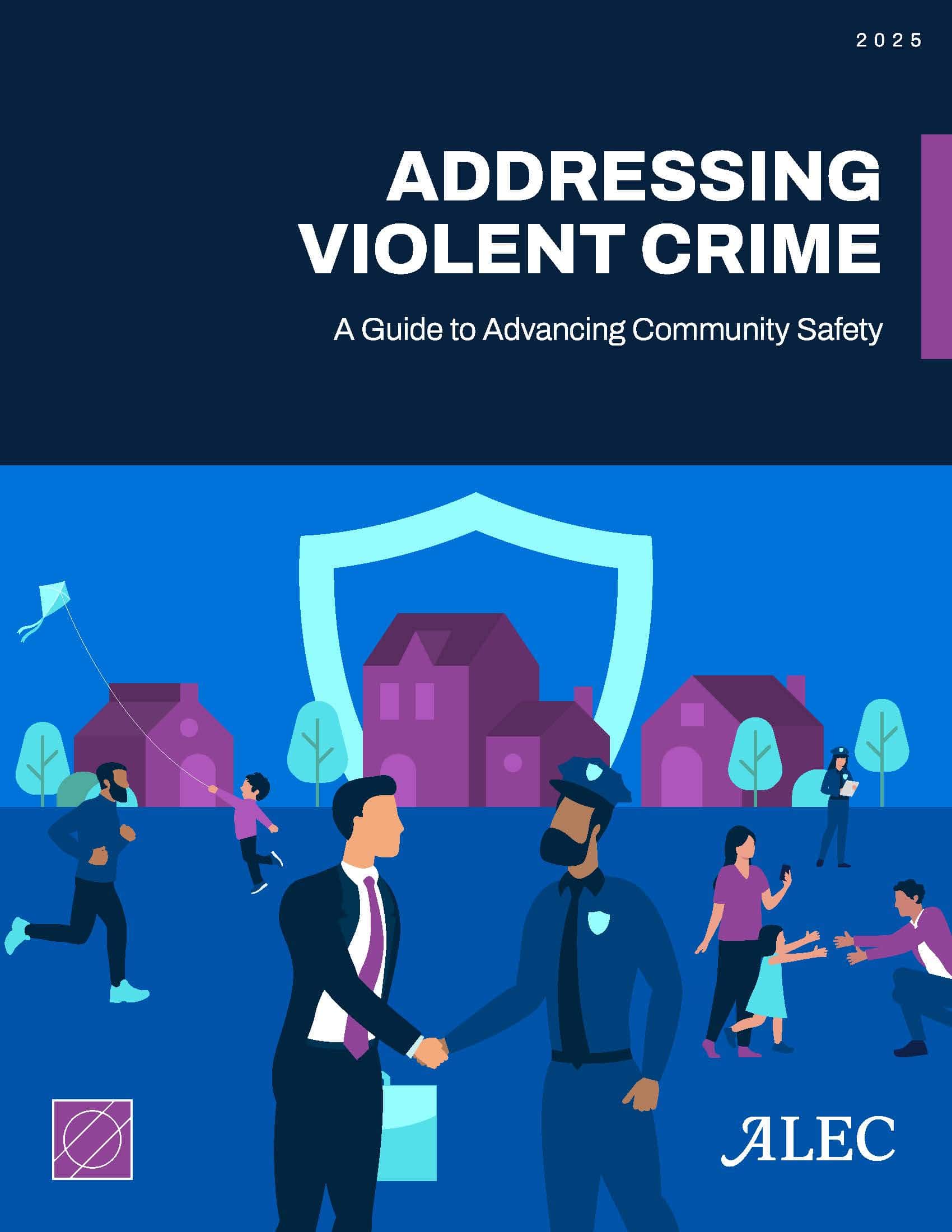














;Resize=805#)



































